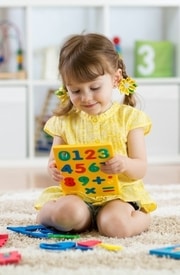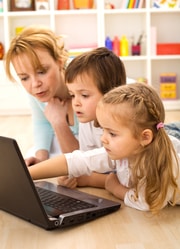Healthy Ways To Feed Your Kids
With eLearning on the rise, it’s important to keep our kids’ brains moving. Doing so will help them to perform at their best given the challenges eLearning can present. It will also help them relax as they spend more time at home. Healthy eating can help in many other ways as well.
Health agencies, childcare organizations, and child-friendly brands always remind parents and guardians to encourage kids to eat nutritious foods. For instance, the World Health Organization (WHO) sets child nutrition guidelines, and The Dietary Guidelines for Americans recommend a healthy eating pattern for people aged two years and above.
Now more than ever, parents must ensure that their children are taking nutrient-dense foods to ensure they grow healthy, strong, and happy. But many parents face a struggle in feeding healthy foods to their children. Luckily, food experts like Serenity Kids share valuable information with parents online, such as choosing healthy snacks for picky eaters.
Since children are getting out less, their immune system is vulnerable. During winter months, we receive less Vitamin D, exercise less, and can even go a little stir-crazy. With nutrient-packed meals and snacks, your children can be a little more at ease in their new, but still temporary, full-time environment.
Furthermore, this is a great time to get creative in the kitchen. Choose foods that stimulate child development. Select ingredients wisely and be careful not to frivolously fill your shopping cart with just any food. Make a list, and limit the number of times you visit the grocery store to prevent bringing back the virus to your children.
You can also make a menu list, food journal, or cheat sheet that includes valuable information about your children’s special food preferences. Take note of the healthy food recipes you cook that they like the best, allowing you to create more versions and serve them the next time without boring your kids.
Additionally, read or watch cooking techniques and recommendations from chefs, nutritionists, and pediatricians, and note them in your journal. This can help you learn creative ways to make vegetables, fruits, grains, and other nutritious foods look interesting and appetizing. That way, you can improve your food preparation skills and boost your children’s healthy eating patterns.
Tasty meals can help fade the negative stigma most children have surrounding nutritional eats, and can even go on to make them prefer fruits and vegetables rather than being resilient to them. Here’s what you can do:
When cooking at home with your kids, be intentional about meal prepping and portion control. It’s best to avoid highly processed snacks such as cookies, crackers, chips, and canned foods containing high-sodium and high-fructose corn syrup. Bake your own sweets using natural ingredients. Low-fat popcorn and nuts make great mid-day snacks; and for dinner, pairing pasta or rice with a protein, such as fish, can fill your little ones’ bellies for much longer.
Lastly, be aware of the “Pandemic Pantry,” the list of items shopped are stockpiling. These include canned foods, hand sanitizer, toilet paper, and bottled water. Buying a water filter can help alleviate the purchasing of bottled water, and given the recent governmental policies, we need not fear being disconnected from your water supply while under quarantine – even if bills begin to pile up.
Taking the opportunity to show your kids healthy eating habits can benefit them now, and also influence them to continue a great diet post-quarantine. If you read the infographic below, you can gain more information on how to eat healthy. Take care, be safe, and enjoy your extra family time.










 Explore the Safe Search Engine -
Explore the Safe Search Engine -